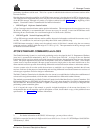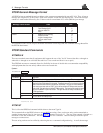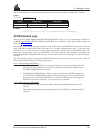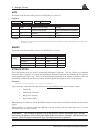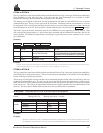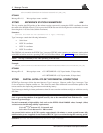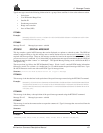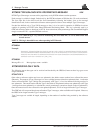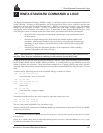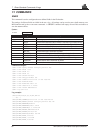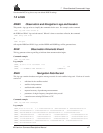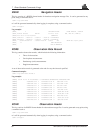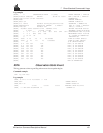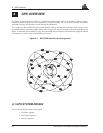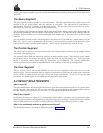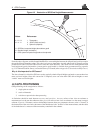
7 Rinex-Standard Commands & Logs
MiLLennium Command Descriptions Manual 45
7 RINEX-STANDARD COMMANDS & LOGS
The Receiver-Independent Exchange (RINEX) format is a broadly-accepted, receiver-independent format for
storing GPS data. It features a non-proprietary ASCII file format that can be used to combine or process data
generated by receivers made by different manufacturers. RINEX was originally developed at the Astronomical
Institute of the University of Berne. Version 2, containing the latest major changes, appeared in 1990;
subsequently, minor refinements were added in 1993. To date, there are three different RINEX file types. Each
of the file types consists of a header section and a data section, and includes the following information:
3
• observation files (carrier-phase measurements; pseudorange / code measurements; times
of observations)
• broadcast navigation message files (orbit data for the satellites tracked; satellite clock
parameters; satellite health condition; expected accuracy of pseudorange measurements;
parameters of single-frequency ionospheric delay model; correction terms relating GPS
time to UTC)
• meteorological data files (barometric pressure; dry air temperature; relative humidity;
zenith wet tropospheric path delay; time tags)
NOTE: Although RINEX is intended to be a receiver-independent format, there are many optional records
and fields. Please keep this in mind when combining NovAtel and non-NovAtel RINEX data.
In support of the first two file types, NovAtel has created six ASCII log types that contain data records in RINEX
format (XOBS, XOHD, XNAV, XNHD, XKIN, and XSTA). A seventh pseudo-log type (RINEX) can be used
instead to simplify data collection. These logs produce multiple lines of output; each line ends with a NovAtel
checksum. Once collected these logs should be processed into the 2 standard RINEX files using NovAtel’s Convert
utility.
A sample session, illustrating the use of the commands and logs, would be as follows:
COM1> log com2 rinex ontime 30
(some time later - move to a new site)
COM1> log com2 xkin
COM1> rinex markernum 980.1.35
COM1> rinex antdh 3.1
(at new site)
COM1> log com2 xsta
(some time later - logging complete)
COM1> unlogall
It should be noted that the first line of this example is equivalent to these two lines:
COM1> log com2 xobs ontime 30
COM1> log com2 xnav onchanged
The use of the pseudo-log RINEX is for convenience only.
After the UNLOGALL command, the XNHD and XOHD logs are automatically generated if XNAV and XOHD,
respectively, were active.
3. For further information on RINEX Version 2 file descriptions, you may wish to consult relevant articles in scientific
journals such as:
Gurtner, W., G. Mader (1990): “Receiver Independent Exchange Format Version 2.” CSTG GPS Bulletin Vol. 3 No. 3, Sept/
Oct 1990, National Geodetic Survey, Rockville.
7 RINEX-STANDARD COMMANDS & LOGS



